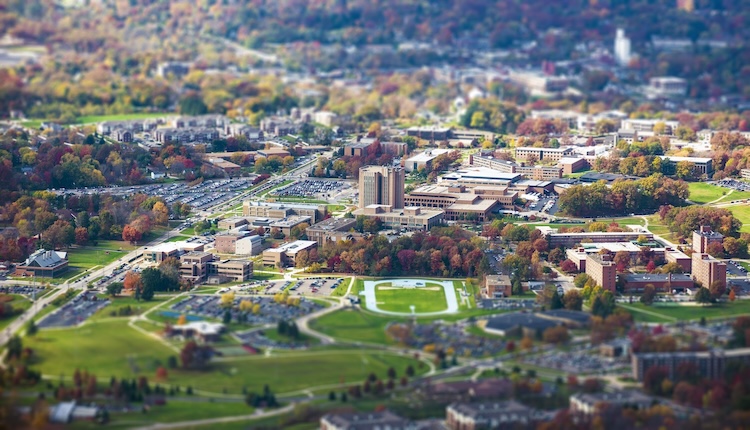With more industries using artificial intelligence (AI) to solve an array of research and technical problems, professionals with AI expertise are in high demand. To help address this workforce need, in 2021 Kent State University launched a new master’s degree in AI through its Department of Computer Science.
Students enrolled in the program are required to complete three courses: Advanced Artificial Intelligence, a practicum that prepares them for capstone work and an AI-based, industrial quality capstone project on a large-scale, real-world issue that will position them for work in the AI field, said Arvind Bansal, a professor of computer science and founding director of the Kent State program. The projects focus on natural language processing, cancer detection and deep learning-based image analysis.

To manage the workload associated with the large data sets required by these three courses, Kent State has drawn on the high performance computing (HPC) resources of the Ohio Supercomputer Center (OSC), a division of the Ohio Department of Higher Education.
To acclimate the students to OSC’s systems, Philip Thomas of Kent State’s Division of Information Services provides a tutorial at the beginning of the Advanced Artificial Intelligence course. Thomas is a member of OSC’s Campus Champions program, which identifies information technology professionals at Ohio higher education institutions who can help connect faculty, staff and students to the Center’s services. Thomas also helps the Kent State graduate students enrolled in the three courses to liaison with OSC to resolve any technical and logistics problems they may face.
For the capstone AI projects, the students need to run multiple neural networks and analyze a large amount of data—work that is too computationally intensive for Kent State’s existing computer resources, Bansal said. The students worked on OSC’s Ascend and Pitzer clusters. Ascend, which came online in late 2022, can accommodate deep learning-based image analysis needs in AI projects using GPUs. Students also used the deep learning software frameworks TensorFlow, Pytorch and Keras.
“Students were happy that they could complete and present a real-world project and put that on their resumes,” Bansal said. “The project also satisfied the state’s industrial preparation requirement.”
In addition to helping fulfill course assignments in the master’s program, OSC also serves as a key research resource for Bansal’s doctoral students. Students are pursuing research on kidney cancer, heart disease, cardiac magnetic resonance image analysis and miRNA-mRNA interactions, all of which require a high level of computation on very large datasets that is not possible on a personal device.
The doctoral students have been able to use OSC’s bioinformatics libraries, gather a large quantity of data, publish scientific findings and defend their dissertations with the help of OSC resources.
“It’s a huge benefit for the students to be able to analyze very large datasets, view results and modify algorithms,” Bansal said.
The experience helps prepare Bansal’s doctoral students for careers in academia or industry, where there is high interest in medical informatics, he added.
Bansal anticipates that the Department of Computer Science will continue to use OSC in the upcoming years, both for doctoral student research and in the master’s program in AI, which now has incorporated OSC resources into the syllabus.
The Ohio Supercomputer Center (OSC) addresses the rising computational demands of academic and industrial research communities by providing a robust shared infrastructure and proven expertise in advanced modeling, simulation and analysis. OSC empowers scientists with the services essential to making extraordinary discoveries and innovations, partners with businesses and industry to leverage computational science as a competitive force in the global knowledge economy and leads efforts to equip the workforce with the key technology skills required for 21st century jobs.